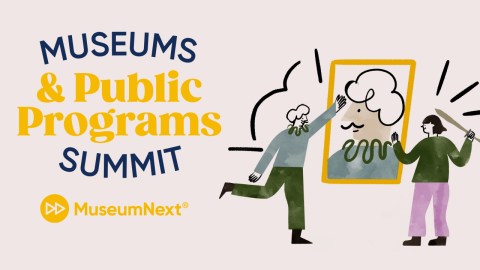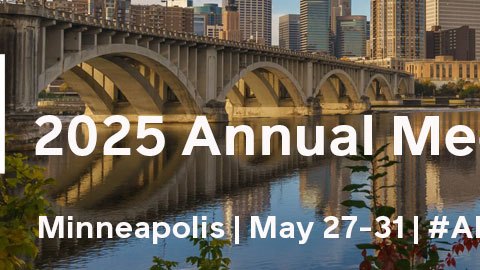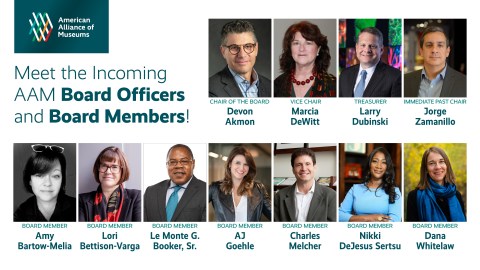This article originally appeared in the July/August 2012 issue of Museum magazine, a benefit of AAM membership.
Art Beyond Sight/Art Education for the Blind (ABS) encourages the visual arts to play a vital role in the lives of people who are blind or visually impaired. Last year, ABS and the Museum of Science, Boston facilitated focus groups in seven museums to learn from this audience, which has traditionally been underrepresented in museums. During these open discussions, museum professionals could hear candid descriptions of what it’s like to be a museum visitor with vision loss. The conversations provided the basis for staff training on the topics of disability awareness, techniques for verbal description and tools for facilitating multi-sensory learning. Following are some key points from the focus groups’ findings.
Are people with vision loss interested in art and museums?
Absolutely. All focus group participants expressed an interest and desire to participate in museum experiences. One said, “To me the museum is more than an hour-and-a-half experience … I am going to milk it … [T]he cafeteria, gift store, outside grass, hang-out spots—all important. I am going to luxuriate in the world of art.” Another participant specifically described himself as “… an art connoisseur; I just can’t always see it.” A partially sighted art collector from New York noted that his experience of art has acquired another dimension since he lost his sight: “I realized I was looking more carefully than I did a few years ago and looking at details more carefully…. I actually got more out of it.” For some participants, museums presented opportunities for spending time with friends and family. For others, museums facilitated powerful learning experiences, generating new insights and providing opportunities for contemplation and immersion.
How can we get feedback on the accessibility of our museum’s programming, exhibits and facilities?
Learning directly from visitors who are blind or have low vision is essential. They know better than anyone else what their needs are, what assets they bring with them to the museum and what they are looking for from a museum experience. Involve the community and end-users in program design and outreach. Develop partnerships with local organizations comprised of people with vision loss and/ or people who serve this audience effectively. Form an advisory board of local people who are blind or have low vision. They will spread the word about excellent museum programs and can offer access to local disability-specific newsletters, listservs, radio stations, etc.
How can I accommodate the diverse needs and interests of visitors who are blind or have low vision?
Provide a variety of programs and avoid the mistake of building your program around the experience of just one or two individuals, assuming that they are representative of the population. Docent-led tours, tactile experiences, recorded audio tours, art-making opportunities, and large-print and/or Braille brochures are a few of the offerings you might consider. Create a welcoming environment and engaging learning experiences for all. By making your collection and spaces accessible to people with low vision, you will create a more inclusive and universally engaging environment for all. Visitors who are blind and have low vision seek social experiences with sighted and blind visitors, or want to bring their family, friends and companions.
How can we train staff to help visitors with vision loss feel welcome?
Across focus groups, visitors who are blind or have low vision reported that they often feel unwelcome when visiting museums. Museums should provide disability awareness training for all staff who interact directly with visitors. Everyone—docents, professionals working in the front of the house, store clerks, café workers, group reservationists, phone operators and security guards— should be aware of the needs of people with disabilities. Have security and front line staff hear first-person accounts from visitors who have, for instance, been reprimanded by museum staff who did not understand their needs. Docents and educators should learn to use descriptive language when describing an exhibit or museum space. Include instruction on providing touch tours and tactile experiences with original artifacts, models and replicas, as well as other multi-sensory learning opportunities such as music, movement, art making and hands-on learning.
What design changes would improve our museum’s accessibility?
The design of museums sometimes creates situations that can lead to physical or emotional harm. A partially sighted New Yorker was shocked at one exhibit whose labels were printed in gray ink on mauve paper: “It was absurd … insulting. It would be difficult for anyone, let alone someone with low vision.” One participant described the humiliating and dangerous experience of tripping on poorly designed stairs; another reported being injured at a museum with glass walls in a dimly lit area. To prevent such experiences, museums can incorporate technology and apply the principles of universal design within their exhibit spaces. Consider changes or additions to existing design and new exhibit design that enable clear and safe navigation and wayfinding. Make sure you are providing intuitive layouts, good contrast, legible signage, clearly marked entrances and amenities, and sufficient lighting. Provide information about the museum’s physical layout in brochures and audio guides.
How can we encourage visitors with vision loss to visit our museum?
Improve the visit-planning process for patrons with low vision by making detailed and usable information available through either phone menus or accessible websites. Schedule accessible programs when the galleries are not busy and around public transportation schedules, or work with community groups to provide transportation to the museum. Offer reduced ticket prices and/or complimentary passes for sighted guides to alleviate participants’ concerns about the cost of a museum visit.
Nina Levent is executive director, Art Beyond Sight/Art Education for the Blind, New York; Christine Reich is director of research and evaluation, Museum of Science, Boston, and was recently named a Champion of Change by the White House for her work at the museum in science, technology, engineering and math (STEM) education for people with disabilities. Museums participating in the focus group effort were the San Francisco MOMA; Seattle Art Museum; Museum of Fine Arts, Houston; Solomon R. Guggenheim Museum; Brooklyn Museum; National Gallery of Art; and the Indianapolis Museum of Art. The full report, Speaking Out on Art & Museums: Study on the Needs and Preferences of Adults Who are Blind or Have Low Vision, is available at artbeyondsight.org.







